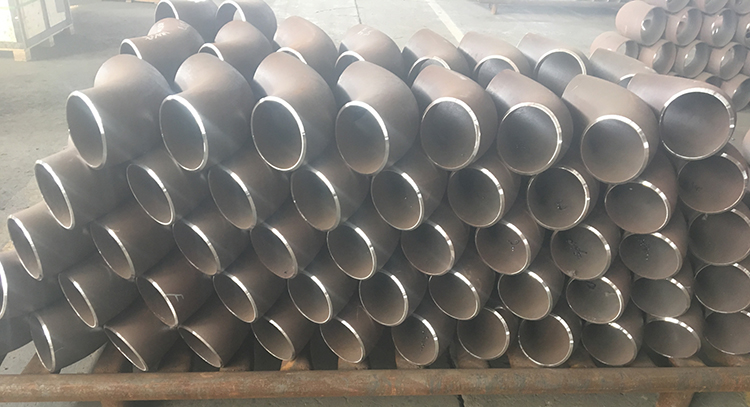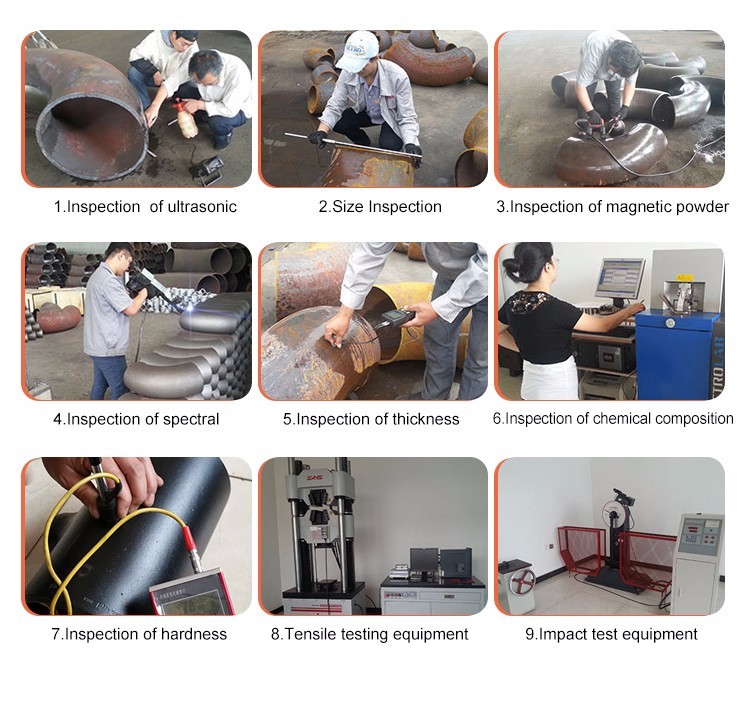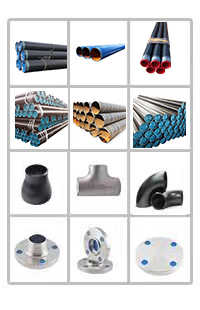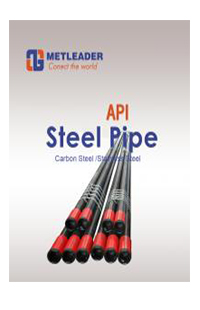Four quality inspection aspects of elbow welding
Inspection must be carried out at the elbow joint, which is also an important measure to ensure welding quality. After the elbow is welded, the welding seam shall be inspected according to the technical requirements of the products. Any defects that do not meet the technical requirements shall be repaired in time (such as the direct waste which can not be repaired due to serious disqualification). Common inspection of welding quality includes appearance inspection, nondestructive testing, hydraulic test and mechanical performance test.1. Appearance check: generally observe with the naked eye, sometimes observe with 5-20 times magnifying glass. Surface defects such as undercut, weld nodule, surface crack, gas hole, slag inclusion and weld penetration can be found by inspection. The dimensions of the elbow weld can also be measured by the solder joint detector or the template.

2. NDT: detect defects such as slag, blowholes and cracks hidden inside the weld. At present, the most commonly used are X ray inspection, ultrasonic testing and magnetic flaw detection. X-ray inspection is the use of X-ray butt weld photography, according to the film image to determine whether there are internal defects, the number and type of defects. And then assess whether the welds are qualified according to the technical requirements of the products. The basic principle of ultrasonic flaw detection is shown below. The ultrasonic beam is emitted from the probe and transmitted to the metal. When the ultrasonic beam reaches the metal-air interface, it refracts and passes through the weld. If there is a defect in the weld, the ultrasonic beam is reflected to the probe and accepted, and then the reflected wave appears on the fluorescent screen. According to the comparison and identification of these reflected waves with normal waves, the size and location of the defects can be determined. Ultrasonic detection is much more convenient than X photography, so it is widely used. However, ultrasonic testing is often based on operational experience and can not leave a basis for inspection. Magnetic testing can also be used to detect internal defects that are not deep on the weld surface and very small surface cracks.

3. Hydraulic and pneumatic tests: For pressurized vessels requiring sealing, hydraulic and/or pneumatic tests shall be carried out to check the sealing and compressive capacity of welds. The method is to inject 1.25-1.5 times the working pressure of water or equal to the working pressure of gas (mostly air), stay for a certain period of time, and then observe the pressure drop in the container, and external observation of leakage phenomenon, according to these can be assessed whether the elbow weld is qualified.
4. Mechanical properties test of elbow: Non-destructive testing can find the inherent defects of the weld, but it can not explain the mechanical properties of the metal in the heat-affected zone of the weld, so sometimes the weld joint should be tested for tensile force, impact, bending and so on. These tests were completed by the test board. The test plate is preferably welded with the longitudinal joint of the cylinder to ensure consistent construction conditions. Then the mechanical properties of the test plate are tested. In actual production, the elbow joint of new steel is usually tested in this aspect.
Previous:What is ERW steel pipe and HFW steel pipe?
Next:Advantages of forming process of stamping elbow
Next:Advantages of forming process of stamping elbow









